|
If you've been running Google Ads (Adwords) for months, but the performance has been... underwhelming or you've tried variations of ad copy and you're getting clicks, but none of these seem to be turning into conversions, then read on for some tips...
0 Comments
(1:30 min read)
It's no secret - Digital Marketing moves fast. Keeping up to date can be challenging. Thankfully, there are a number of well respected and (mostly) free digital marketing courses and training resources available online which are both easily accessible and contain highly current and relevant information...
What if a customer took the time to search for your business; they found you on Google, confirmed your opening hours, looked you up on on Google Maps and drove to your store...
... only to find out that you were closed?
'Getting more visible in Google' is firstly a case of changing old thinking away from 'ranking for keywords' and more towards maximising a 'Page 1 share of voice', or 'share of SERP'.
(Check out our recent blog post to better understand why this is becoming so important). Just to be clear - we're not saying that keywords aren't an important part of an earned strategy... But in the world of SEO, where even Google suggests that it can take at least 4-12 months to start seeing tangible results and the competition is increasing every day - starting with a focus to improve Share of SERP makes sense. Improving visibility and Share of SERP can give small businesses (and large ones) 'quick wins' and more opportunities to be in front of your most relevant customers when it's most relevant. What are The Benefits?
Take Up More of the Room
One on-the-front-foot way of thinking about Share of SERP is as this SMX presentation puts it:
Don't Miss Online Opportunities
Or for the risk-averse, it's also a case of getting the basics right so that your business isn't potentially leaving leads on the table - or even worse - throwing them away. 11 Things You Can Do Right Now to Improve
How can you work towards more 'share of SERP'?
In a number of ways - some of which you can implement easily and right away: Note: we're assuming in this article that you've covered the basics such as submitting your site and XML sitemap to Google Search Console to ensure there are no errors and are now looking to take the next step to earn more visibility. 0. Don't Waste the Space You've Already Earned
Step '0' is to consider the very basics of on page optimisation and the bare minimum info Google displays in a search result:
Make sure these are well-written, free from typos, descriptive, relevant and ideally include a 'call to action' in your meta description. Most modern web content management systems should allow you access to these things either by default or with the help of a plugin. In short - Don't waste the space you already have. 1. Google My Business
It might seem basic, but - ensure your Google My Business ('GMB') listing is optimised, completed, up to date and appears when you search for your business name .
I.e.: If you want people to be able to use the 'Call' and 'Navigate' options from the search results, you need to have the 'phone' and 'address' information filled out. Makes sense, right? Get started at: https://business.google.com/ While you're there, try the brand new Google Posts feature in Google My Business to publish your events, products, and services directly to Google Search. 2. Add Structured Data
Implement and maximise your structured data (especially if you are a museum, movie theatre, musician or sports group).
Get noticed, potentially appear in the knowledge graph or even just to help your business stand out in the organic search results. One example of structured data is starred reviews:
How?
There are a number of ways to add structured data and countless articles online, so we won't go into detail here. Some of the most common ways are:
3. Consistent NAP Details
Ensure your NAP details (Name, Address, Phone Number) are up to date and added to any high quality, relevant directory sites that rank for your search terms.
Consistency also helps Google and other search engines 'see' your different business listings as the same business. This strengthens your presence rather than diluting it. Again, this one might seem obvious - but we see it all too often. A quick word of warning:
If you have a large number of location listings to manage, or need some help claiming listings, you could consider a third party service like Yext or Moz Local to make things easier. 4. Get Creative
Check the search results for other creative avenues that appear alongside your search terms.
Think along other lines such as...
5. Look to The Community
Get active on Social Media
Participate on industry group sites and relevant online communities, aim for a citation or link. Again, this one comes with a big 'take care' warning. For example - Old spammy back linking techniques are high risk and mostly don't even work these days. In short - your guest post should of quality and provide value in it's own right or be highly relevant... not simply a reason to back link to your own site to 'get more links'. Here's a video from Google's Matt Cutts which addresses the question of guest blogging (even back in 2012 it was getting into a grey area).
And here in a more recent 2017 video - Google's Marie Haynes discusses which type of links you can get that do/don't comply with Google's guidelines:
6. Buy it With Adwords
The phrase "if you can't beat 'em, join 'em" comes to mind. But in reality, ads take up more space on SERPs than ever before... especially on mobile.
A few thoughts:
7. Match Content to User Intent
Don't become blinkered and optimise content for single keywords (or broad topics) - try to anticipate and solve user's needs.
In general - Write naturally, match content to the intent of the user who is searching for the page and provide a solution. An example of keywords matched to user intent: 8. Give the Best Answer
Taking point 7 a step further...
Strive to create the very best answer to the question or solution to the problem that the user may be looking for with quality content – a great response that truly deserves to rank on page one organically. As a bonus result, possibly earn a spot as a featured answer directly on the SERP: 9. Think Beyond Text on a Page
Google also displays info such as Videos, Images, News, Maps, Books, Products and Twitter feeds on the search results page.
Could your great answer from point 7-8 be better served as a how-to video, infographic or a PDF e-book? 10. Hijack The Knowledge Graph
Think of other ways to (respectfully) hijack the knowledge graph...
Perhaps build a glossary page or aim to achieve a '#0 ranking' in Google for answers
Here is a possible result:
11. Wear a White Hat. Don't Be That Guy...
Lastly (it needs to be said) - don't try to game or trick the search engines.
Most of those techniques have long been marked as black hat and if they aren't, it's probably not long before they end up on Google's radar. Even if you're winning now with black hat, you might be one algorithm update away from getting a slap down and losing all of your hard work.
(12) What we haven't covered here ('other stuff')...
We'd call these separate topics in their own right and there is plenty of info online that covers these in detail:
In Conclusion
We still see many small, medium (and some large) businesses missing the basics when it comes to visibility online, when it's more critical than ever to start from a solid foundation.
This does leave opportunities on the table for those who can adjust their thinking and start considering the way the modern SERP works and looks - ultimately, maximising their share of SERP. We hope this guide offers some practical, actionable steps to improve your business' visibility online and improve your share of SERP. Get the Infographic
Additional reading:
This article on PPC Hero expands further on 'share of SERP' and this SMX post on Slideshare gives further tips (including some more advanced ones on implementation and optimisation.
Google's ongoing commitment to education in digital marketing is significant and hard to miss. Their list of online courses and digital marketing training partnerships keeps growing all the time.
This list is expanding so rapidly that (in addition to our recent article 8 (Mostly) Free Digital Marketing Courses & Training Resources Online) we thought it was worthwhile to expand out on Google's online course offerings in one place. The list is below. Short Form Courses and Certifications
4. The Digital Garage (by Google)
5. Primer (by Google)
Longer Online Courses
6. Squared Online
We'll aim to keep this article updated as the list undoubtedly continues to grow. Feel free to message us or comment with any other Google Online Courses to add or if any of the information above changes.
Related Posts:
(7 min read)
Taking a real example from our own website not long after launch we wanted to share a few tricks and techniques to stand out from your competitors in Google, no developer required!* * Tips provided here can mostly be done by small or medium businesses through a combination of your website content management system ('CMS') if you have one, plugins and Google Tag Manager. Disclaimer: This is a basic level introduction to search engine visibility and not an SEO guide - these are tips to improve visibility in SERPs (not rankings). Individual experiences may differ depending on your website and situation. Lastly - Nothing can be guaranteed with Google. Step 0: Google Search Console (formerly Google Webmaster Tools)
We're calling this one 'Step 0' because before moving to the other steps you should first:
Step 1: Google My Business
'Google My Business' is free. For almost all businesses, this is an essential place to start.
You can see below that we even had some difficulty ranking for our own business name initially (more on that later). A Google search of 'mach digital' returned over 14 million results. Position 1 was initially held by the Facebook page of an unrelated printing company. The red box on the right is where our Google business listing should have been.
Step 1
Hey presto! Almost immediately after verification our business map listing started to appear:
*Note that appearing in the map/business results is different to appearing in the main/organic results of Google.
This is a common confusion point. This article explains the difference in more detail. Step 2: Social Media
Next mission - push down that competitor's Facebook page.
We were having some issues initially verifying our business Facebook page. Since we're primarily a web-based business and don't have a phone number publicly listed, Facebook wouldn't allow us to verify the page by this phone method. We would tackle that later. Note: Facebook states in it's page settings "Verified Pages show up higher in search results." Step 2
Google+? What? You're crazy! We're hearing some people say.
For anyone who's generally lost faith in Google+ and doubting it has any effect on web results, check out Mike Blumenthal's excellent local SEO video here.
Step 3: Structured Data
As a bit of extra housekeeping, we added structured data to our page, at this stage focusing on our business details, reviews and social media pages.
There are a number of guides online for adding structured data to your site, so we won't cover it in detail here. As a quick mention, here are some ways to go about it: Step 3 1. Via Google Tag Manager using the JSON-LD method. This one may not be best in all cases, but it is particularly good if you already have GTM code installed on your side and/or don't want to hassle a developer every time you need something implemented. In the case of some CMS' like Weebly where things are a bit 'locked down' at times, using GTM can also be good as a workaround to add schema to blog posts etc. 2. If your site is on Wordpress -
3. Or you can try Google's Structured Data Highlighter within Google Search Console (formerly Google Webmaster Tools) to apply structured data to page elements without any coding needed.
The social media structured data is to tell search engines that the social pages are the same business/entity as the website.
The social media 'sameAs' data looks like this when implemented (partial code shown only):
"sameAs" : [ "https://plus.google.com/+MachdigitalAu", "https://www.linkedin.com/company/17988833", "https://twitter.com/machdigitalAu", "https://www.facebook.com/MACHDigitalAu" ] Step 3.5: Reviews / Ratings Data
Working towards positive Google (and other online) reviews is important for any business online. Users rely on social proof more than ever before making a purchase decision.
Being mostly white labelled, we found that we had a number of positive reviews from other sources but couldn't directly display these online or ask our clients to post these in Google. Note: The method below is NOT a substitute or replacement for getting real, authenticated user reviews, but it can help as a start. The code for products looks a bit like this when implemented (partial code shown only). "@type" : "Product", "name" : "Digital Marketing Consulting", "image" : "http://www.machdigital.com.au/uploads/9/8/2/3/98239458/icon-fix-digital-skills-gap-1_orig.png", "description" : "Fix your digital skills gaps - Digital Marketing Help on Demand - Training, Strategy, Consulting", "aggregateRating" : { "@type" : "aggregateRating", "ratingValue" : "4.7", "reviewCount" : "13" } The Results
In the space of only a couple of weeks, there was quite a dramatic change:
After a bit of time we also noticed our LinkedIn page appearing in search results. Our Next Action/s
Getting that Facebook page verified and showing about the competitor
At the time of writing, we're still fighting to get our Facebook business page verified. Once we do, we'll post further updates. Since it's almost impossible to get much organic visibility in Facebook these days unless you have at least a few people following you, along with micro-boosting, we ran a small Facebook paid ads campaign to increase likes and thereby reach and engagement of our Facebook posts. It's also perfectly fine to invite a few friends and colleagues to like your business page. This campaign resulted in around 60 page followers in 5 days for a spend of around $100. We're now getting some good engagement with our posts which is starting to work as another channel. Once you've created some valuable content on your site, hopefully you will start to see some of this get amplified and shared via social media, which all helps. Other Things You Could Do
The list goes on.
Most steps from here on will depend on your own business goals, the type of business you run, your industry and a number of other factors. For example:
If you're at this stage and wondering how to get started or take it to the next step, check out our free 35 point digital marketing checklist we hope this gives you a start. Or, check out more detailed tips and strategy around gaining more 'Share of SERP' here. As a final note: When Googling your business name like this (or other keywords), results can vary based on a number of factors such as user location. Also, if you're logged in to Google, preferences and web history can affect search results if this is not turned off, so for better accuracy and less skewed data ideally:
Take Charge of your Digital Marketing with this 35 Point Checklist
No, this isn't another washed-out guide spouting trends like 'social media will be big in 2017'. Yes, this is a real, step-by-step digital marketing checklist. How do I use it?
Most importantly, we want to help you answer this question:
"We're an [insert company] selling [insert products] in [insert location].
How do we go about digital marketing?"
* The checklist is based on 15 years' working with clients digital-agency-side and similar to the kinds of questions you might get asked in a typical 'client brief' or 'discovery' meeting.
A) To Start... Housekeeping & Prep
Whether engaging with a digital agency for the first time or changing agencies (or even if you aren't), it's always good to have your house in order.
1. Get prepared. It will save time and effort later. For example, a digital agency will often need access to:
This might seem basic at first. But, if we had a dollar for every hour spent chasing down login details over the years... well, you know how it goes...
Also give some thought to: 2. Nominate one key stakeholder This is a primary contact to act as a liaison between your business and the agency. That person should be a filter for any internal conflict and only relay the final decision and comments to the agency as well as acting as a conduit with other service providers to keep information flowing. B) Your Current Marketing Strategy
Take stock of your current strategy:
3. Which providers do you already work with and how will they work together moving forward? (will there be any conflict of services?) 4. What other domain names / apps / online assets do you own and how are these related to each other? 5. If considering SEO... Has any previous SEO work been done on the website(s)? Is there any risk that dodgy techniques were used or could your website be penalised? 6. What is your current marketing mix and spend? What's working and what isn't? How are things connected? Radio, TV, Print, Directory, Website, Adwords, SEO, Social Media, Direct Mail, Other? C) Be Clear on Your Goals
Before you get to the 'marketing' part, it's essential to be clear on the basics.
7. List 3-5 primary goals of your digital marketing efforts.
Be specific. Don't just list 'more sales'. They should also be measurable, agreed upon and achievable (especially if working with a digital agency), realistic, relevant and time-based where possible (SMART). 8. Define what success looks like - what metrics do you plan to track and use to gauge success? 9. In what time frame do you hope to see these results? 10. Which conversion goals do you want people to take? 11. How much is a good conversion worth to you? Consider one-off sales and also the lifetime value 'LTV' of a customer. Some example goals:
D) Your Company
Be consistent in how your company is represented online:
12. Ensure your NAP ('Name', 'Address', 'Phone') and Industry details are consistently formatted, complete and clear on all online portals. *This not only helps people find you online, but it's a local SEO tip too.
13. What's your grand vision / story / purpose? Why does your organisation exist? Don't underestimate the importance of starting with the 'WHY' of your organisation.
14. What are your Unique Value Propositions (or 'Unique Selling Propositions')?
What are the main benefits of your products or services that are unique to your business?
15. Is your business (or products) seasonal? Are sales heavily influenced by the time/season of year or during specific holidays? 16. What is your main business model? How does you business work? For example: Online / offline sales? Retail or wholesale? Physical purchase or mail order? 17. How many staff do you have? What skills or qualifications do they have that are worth highlighting? 18. What memberships or associations is your business part of? Give thought to what logos etc. you need to display and also how you can connect with these groups online. 19. Opening Hours As with point 12 - be clear and consistent with these, including your holiday opening hours. E) Your Products & Services
Understand your highest value products and services:
20. Is your website up to date with your current products/services? Are any of the products listed no longer available? 21. What are your 'hero' products (your most profitable products or services to promote)? 22. How many of these products/services do you sell in a year? How many would you like to sell? 23. What (according to your customers) makes them choose your products or services? 24. Why do clients come back to you/repeat purchase? F) Your Audience
Get to know your audience.
25. In which geographic areas do you operate and where could you expand to? 26. Are your current customers your ideal customers? Why (or why not)? 27. Who do you most want to reach? 28. 'Personas' - What do your most valuable customers look like? Personas are semi fictional representations of real customers. ** Repeat points 28 a-t for at least 2-3 'ideal customers':
Digital Marketing opens up many opportunities to identify and target your customers. Take advantage of this: understand your customers, go where they are and make your marketing investment count. G) Your Competitors & Industry
We're not suggesting you 'copy' your competitors, but you should understand what they are doing and how your audience is used to receiving information in your industry
29. Who are your 3 biggest direct competitors? 30. Which channels do competitors typically use to compete online in your industry? (Video, SEM, SEO, Social Media, other) 31. What's the size of your industry and your current Vs desired market share? 32. Is your industry price-sensitive? Are there any other specific ways competitors compete in your industry? Seasonal discounting, value-add products, free quotes etc. 33. How are you currently positioned in your industry? Are there any opportunities or threats? 34. Are there specific words or phrases (or 'industry jargon') people might search for ONLY in your industry? 35. Are there specific promotions you would normally run? When and how could you run these on digital/online channels? Who would you target and why? Putting It Into Action - AKA 'The Marketing Part'
Now, what do you do with this information?
Hopefully you've already had a few light bulbs turn on during this process and some ideas are flowing. If not, then engaging with a digital marketing consultant or digital agency can certainly help you kick start things, avoid any costly mistakes and set you in the right direction. If you still want to give it a try yourself first, here are a few tips:
What works for your business and customers will not be the same as someone else, even if they are in the same location and industry. The diagram below gives an example of what you could focus on at various stages of the customer journey, and which channels may be effective. But this is only a guide; always start with your business goals first.
A few thoughts and ideas:
a) If you need more awareness or are looking to influence buyers during the consideration stage you could:
b) If your goal is more activations or purchases, perhaps:
c) Or are your customers likely to make repeat purchases or refer friends?
And don't forget - d) In all of this, it's important to make sure your website:
You don't want to be 'pouring water into a leaky bucket'! Get the 35 Point Digital Marketing Checklist PDF
Free PDF version available for download.
No annoying popups or email address required!
2 min read
We read a job ad for a 'Digital Marketing Manager' today and laughed. Not in a good way.
'This needed to be shared', we immediately thought.
We've written at length about why true Digital Marketing Specialists don't exist and how important it is to understand the real scope of digital marketing when hiring and building your digital marketing team. This is why a job ad that lists an exhaustive range of digital marketing skills as a requirement attached to a mediocre salary package does 2 potentially damaging things: 1. Devalues Digital Marketing Skills in general 2. Risks spreading and creating a precedent that the expectations are acceptable and/or reasonable To someone who has been in the industry for 15+ years, it can sometimes feel a bit like this is the expectation of what's possible:
We won't name the employer or post the full ad, but here is an excerpt of the listed abilities required:
Key Abilities
The Salary Expectation? AUD $40,000 - $49,999 plus super* In Conclusion
We hope this serves as an education piece for businesses to consider when hiring for digital marketing skills.
For job seekers in the digital space, understand that digital marketing knowledge gaps exist and most importantly, don't underestimate your worth. There are many salary reports online with useful data. One tool (for Australia employees) Hudson's salary calculator gives up to date salary information to help you get a better understanding of what you're really worth. * For a comparison, 'Digital Campaign Manager' in Perth is listed in Hudson's calculator as AUD $85,000-120,000
(9 min read)
Marketing, Sales and Web Development... together in harmony? Data based decisions being made, with information being fed back via closed loop reporting to keep departments aligned, informed, agile and working collaboratively towards common goals? Yes it is possible. And it's already happening. Growth driven design (or GDD) is relatively new as an 'official' methodology and continues to gain traction amongst web developers, sales professionals and marketers alike: perhaps because GDD just seems to make sense. This article explores some of the core concepts around GDD and it's alignment with growth marketing. We'll go on to suggest how marketers can apply a growth mindset to tie together and drive effective customer centred digital strategies in an increasingly data-driven environment. What is Growth Driven Design? (the 2 minute version)
Growth driven design (or 'GDD') was born from the idea that the process of traditional website design is broken.
You may have experienced this 'broken process' first hand in your organisation if you've ever had to build or rebuild your company website. When you think 'website', do any of these issues and risks sound familiar?
Growth driven design not only sets out to solve these common issues, but it's also tightly integrated with marketing and sales. What analysts learn about website visitors and behaviour helps to inform and improve marketing and sales strategies and tactics (and vice versa).
In addition, there is a phase of 'continuous improvement' built into the process. Continuous Improvement follows a 'launch pad' site which is aimed at being the minimum viable product to go live with. This launch pad site is still a complete site, but is made live with the understanding that it isn't perfect (websites in general, by the way, are never perfect). With traditional web design, going live is usually considered the end point - break out the champagne and move on. However, with GDD - the launch pad website forms a starting point to work from and begin collecting the valuable user data which will guide future decisions around features, pages, design and content. ** There are plenty of resources online that cover growth driven design in more detail. For a deep dive, check out Hubspot's own excellent GDD certification course and growthdrivendesign.com What is Growth Marketing?
Another logical extension of these concepts comes in the form of Growth Marketing (and just quickly - we do mean growth marketing here, not growth hacking).
A Growth Marketer, in a basic sense, could be any data driven marketer whose goal is attracting more engaged customers, leading to growth. Typical efforts may be towards running experiments such as A/B testing, digging into user data to derive meaningful insights and focusing around conversion rate optimisation. As this article on Drift puts it - the key difference between growth marketing and traditional marketing is: "traditional marketing focuses on the top of the funnel, the growth marketing job description requires focusing on the entire funnel." Fundamentals of a Growth Driven Mindset
As we then look at both Growth Driven Design and Growth Marketing, we start to notice some convergence in the core values of both mindsets:
Notice anything similar?
Since we're starting with a (somewhat) unified mindset, let's next take a look at tying together three of the core principles and putting things into practice... 1. Everything Starts with the User / Customer
It's no secret businesses are realising the importance of putting the customer at the centre of marketing, sales and service efforts.
According to Adobe's recent 2017 Digital Trends report, 71% of respondents considered 'optimising the customer experience' to be 'very important' for their digital marketing over the next few years. Both growth driven design and growth marketing share a similar user-first philosophy:
Hubspot goes a step deeper on this last point to suggest this comes even before business needs. This makes a lot of sense when you realise that there is often a gap between what a business wants and what the business' customers want. When you focus on solving for the user first, solutions immediately become more meaningful and less time is wasted on building 'solutions' that nobody actually wanted in the first place! 2. Focus on The Whole Funnel
Customer experience should not be the responsibility of one individual or department; it is the responsibility of the entire organisation. Therefore, it makes sense to consider the entire funnel (not just sales, marketing or customer support) when focusing on growth driven initiatives with the customer at the core.
... many different parts of the organization are responsible for delivering the ultimate customer experience. Providing a seamless customer experience thus begins with the customer’s perspective at the center of the organizational structure and requires all parts of the organization to work together in lockstep.
Once you have adopted a user/customer first approach and identified your highest value customers, it's important to:
For business operations - the aim should be to unify the organisation around these goals.
Only a basic understanding of the modern purchase funnel is needed to realise how important this full funnel mindset and approach can be and how critical it is to long term business success: 3. Continuous Learning & Improvement
Be willing to measure everything; be willing to admit failure; always be learning; get stuff done. These core principles all ring out in support of an agile, experiment-driven approach to marketing.
In new businesses this is particularly important, because:
Though even in well-established businesses where the consumer environment is changing at a rate faster than ever before, the principles are valid. Besides, with so much access to data and software and tools such as A/B testing so readily available, why wouldn't you test, measure, learn and grow? Lastly - close the loop and make sure the data from customer service is flowing back to sales, vice versa and all the way through the funnel. Say no to silos. Putting It Into Action
Now you've got your 'grown driven hat' on and you're ready to tackle the whole funnel.
Where do you start? How do you prioritise? Conveniently, Growth Driven Design suggests an 8 Step Framework for prioritising the changes and attention/focus areas for websites (or 'website hierarchy'). The two interconnected pieces of this process then are the 'GDD Website Hierarchy' and the 'Continuous Improvement Cycle' (Plan > Build > Learn > Transfer). In order of priority/hierarchy:
We're assuming in the example above that a company website forms the central point and conversion funnel of the overall sales and marketing efforts. Credit for the 8 points above to Hubspot.
For more help on implementing the steps above, or for in house training sessions on growth driven concepts, you can speak to one of our experienced digital consultants.
In Conclusion
Concepts like growth driven design and growth marketing reinforce a convergence towards a customer first, data driven mindset. Whilst some organisations find this shift easy, others are still struggling to adopt this approach and move towards customer experience excellence.
Even in 2017 a number of challenges still exist around this, such as navigating data, cultural challenges, strategy and creating momentum within the organisation, as well as digital marketing skills gaps. McKinsey&Company suggest a three tiered approach to tackle these challenges at an organisational level. For marketers, the movement starts with the right mindset, then considering the key actions:
We hope this article has provided some ideas to light that 'fearlessly creative' spark. A footnote:
An article first published in 2012 from the IPA (with Thinkbox) demonstrates the importance of and improved effectiveness of pairing short term, data driven campaigns with long term creative ones. The report examines the business effects of 1,000 advertising campaigns from over 30 years of IPA Effectiveness data. Of particular note - it warns about the danger of using very short-term metrics as primary performance measures for long-term success, since short term and long term effects work differently. We felt it important to reference the article here: https://www.thinkbox.tv/Research/Thinkbox-research/The-Long-and-Short-of-it
** Last updated 29 May 2017 - Now '13 of the Best' **
(5 min read) Since 'best' is a subjective term, let's first quickly clarify that the list below is a selection of digital campaigns that we personally found to be innovative and interesting over the past 12 months or so. Most importantly, we've focused on campaigns and products demonstrating a creative, marketing application of modern digital technology in a unique and/or specific way. Were all of these campaign examples successful? We're not entirely sure. Are there others that deserve a spot on this list? Most definitely. We'll try to keep the list up to date as we move through the remainder of 2017. Let's dive in, in no particular order. 13. Air New Zealand AR to Read Customer Emotions
May 2017
Augmented reality (AR) could one day be used by flight attendants to immediately get information about your favourite drink, destination, loyalty status, meal preferences and even figure out how you are feeling. A collaboration between Air New Zealand and Dimension Data, the project is currently in beta but there's room for further AR experiments. Read the full story here. 12. Coca-Cola Targeted Ads Based on People’s Facebook & Instagram Photos
May 2017
Coca-Cola wanted to nudge users to consider its 'Gold Peak' brand of iced tea. To do so, they trawled through people's photos on Facebook, Instagram and Twitter and served them hyper-targeted ads based on images they shared on those social media platforms. To make this a reality, they tapped into an image recognition engine to identify people who posted images that:
Talk about specific targeting! Read more here. 11. Blippar: Augmented Reality in Banner Ads
8 May 2017
What's the next logical step from Pokemon Go? How about augmented reality in digital ad placements. Enter Blippar. From their Youtube page: "Introducing the world’s first augmented reality digital ad unit - augmented reality digital placement (ARDP). The new technology enables rich media units to leverage a user’s smartphone or desktop camera to bring brand experiences to life in AR without the need for a separate app or a special device." Watch the full video here. 10. New Zealand Fire Service 'Escape My House'
22 Mar 2017
'Escape My House' is an interactive experience that takes place inside a real house fire, demonstrating in a very tangible and immersive way the need for households to be prepared for a fire and why they need an escape plan. FCB New Zealand has used a combination of interactive 360 video (with a virtual reality (VR) option) in a technology first in partnership with the New Zealand Fire Service. The experience is of an actual house fire, which the user is challenged to escape. What looks like a manageable fire is, in fact, already out of control and you have only seconds to get out safely. 9. King Kong Movie Google Maps 'Skull Island'
Feb-Mar 2017 (approx.)
A fictional location as part of the upcoming King Kong movie release, for a limited period of time 'Skull Island' was added to Google Maps by Google in partnership with Legendary and Universal Pictures. It appears as an 'archaeological site' off the west of the coast of Peru and near the equator. Users can post their own photos and 'fantasy reviews' of Skull Island. 8. Audi Q2 #Untaggable Hashtag Generator
Mar 2017 (approx.)
Audi's statement for the campaign is: 'We have a hashtag for everything. What should be the hashtag for Audi Q2? That's #untaggable'. Users are encouraged to create a hashtag for the new Q2 crossover SUV. The campaign is tied in with an interesting 'hashtag generator' on Audi's site, which on the mobile version let's you shake your phone to generate random hashtags. Watch the full Audi video ad here. 7. Ikea Renamed Products After Frequently Googled Problems That Those Products Solve
Dec 2016 (approx.)
In a clever play on user intent and how this is used by search engines like Google as part of it's algorithm to display search results, Ikea not only came up with an interesting campaign, but also one with a very solid grounding in SEO principles. Apparently 'unrequited love' can be solved for just $14.99. 6. 'Alice Through the Looking Glass' Wonder Mirror
Early 2016
In a high budget use of complex facial recognition and 'real time augmented facial transformation', Part IV delivered a creative, interactive experience for Disney that 'hadn't really been accomplished before'. Users could transform their faces in real time to look like characters from the movie. Instagram-sized videos and a photo were then emailed to users as soon as they completed the experience. Check out the full case study here. 5. The Banner Ad that 'Can See What You See'
Early-Mid 2016
In this example, one of Europe's largest energy companies Vattenfall combined real time user data from Sweden's largest real estate website with sophisticated real-time image recognition to show custom, dynamic creative and call to actions to around 2 million users per week, personalised based on the image that they are viewing at the time. The end result: a dynamic banner ad that can adapt it's messaging to millions of images, all in real time. Read the full case study here. 4. UNICEF's Hidden Banner With a Strong Message
Early 2016
According to the case study, 25% of online users in Sweden use ad blockers to prevent banner images (ads) from showing on websites. In this example, UNICEF had an important message for the campaign to deliver and they needed as many people as possible to sign an online petition for children's rights. The solution: to turn this technology around and target a message specifically to these 25% of users. A 'disguised banner' was created that would get past the ad blocker software and delivered a simple message that earned it’s space: “Children’s rights should never be blocked. Sign up for children’s rights to complain.” Read the full case study here 3. Virgin's Push for VR
Early 2016
It's great to see many creative examples of VR emerging and being used in digital marketing campaigns. It's a bit sad then, that at the same time, many sources are reporting a slower-than-expected adoption of the new technology in 2017 - a year that was touted by many as 'the year of VR'. The biggest hurdle seems to be a stalemate between content producers that are waiting for more advertisers to come on board and advertisers who seem hesitant due to a lack of content producers. Hopefully we see this hurdle overcome soon. Virgin has been one of the first to embrace VR with considerable gusto. Virgin created a unique solution where customers in stores could be entertained while they waited with a virtual tour of Virgin Holidays’ destinations, allowing them to ‘try before they buy’. The content was filmed from a first person perspective, 'so everything captured, at every angle, was the sensation and visuals a customer could experience themselves.'
*The last two mentions are more 'products' than 'campaigns'. However, they certainly satisfy the criteria of being innovative and were just too awesome/weird not to include in this list.
2. Pizza Hut 'Pie Tops' - Order Pizza From Your Shoe
March 2017
Yes, really. Whilst they may not be the future of shoes, the interestingly named 'Pie Tops' are part of a Pizza Hut ad campaign starring retired basketball player Grant Hill. The shoes feature built-in bluetooth that syncs to a mobile app. 'When a user squeezes the right tongue once or twice (this can be adjusted in the settings to avoid accidental activation), it places an order for whatever style of pizza the wearer has saved in the app.' Read the full article here. 1. Google and Levi's 'Project Jacquard'
Early-Mid 2017
It might look (or sound) like a gimmick at first, but Google and Levi's seem quite serious about their next swing at the wearables market. Slated to release in the US in Spring for around $350, the technology is much more than just adding wi-fi connectivity to a jacket. According to the official site, the technology actually 'makes it possible to weave touch and gesture interactivity into any textile using standard, industrial looms.' This means that 'Everyday objects such as clothes and furniture can potentially be transformed into interactive surfaces.' Excited yet? The jacket is even planned to come with it's own API for app developers. Get the full story here
Check back for updates to this article. Feel free to share other examples in the comments section.
|




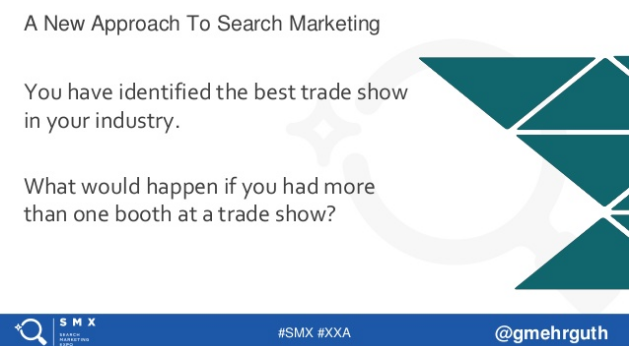



























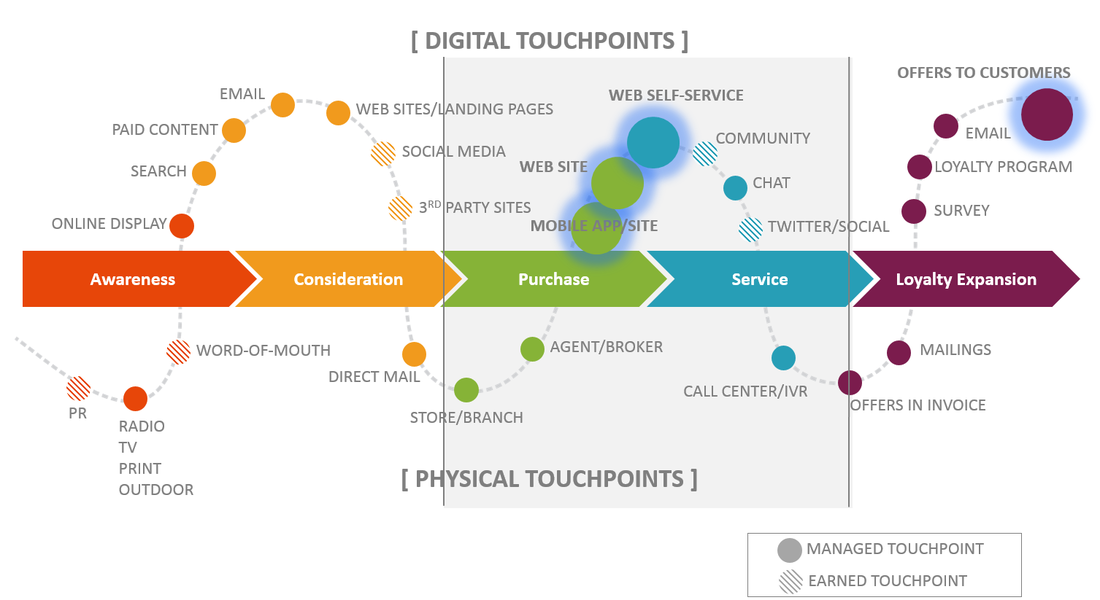





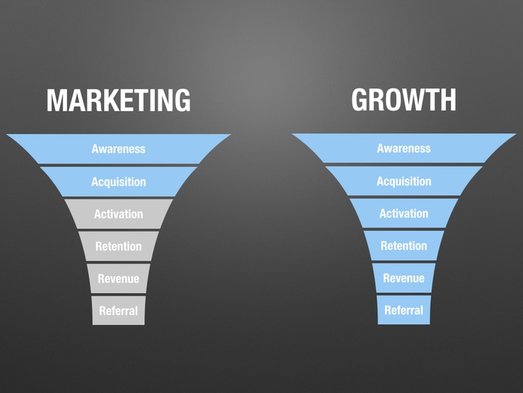

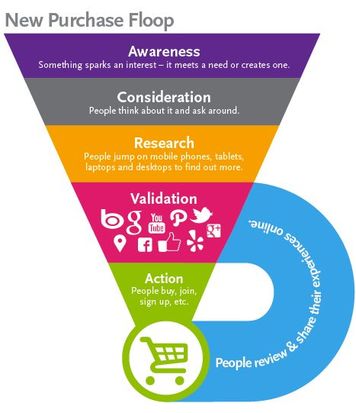



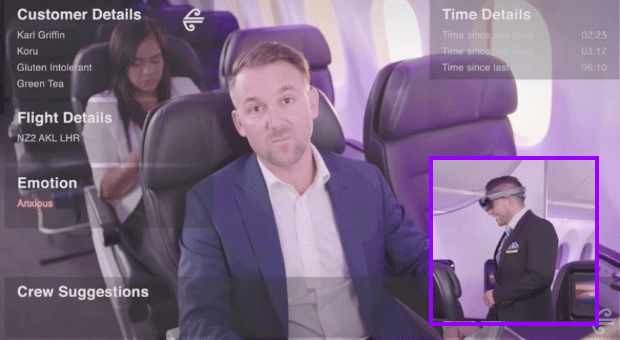












 RSS Feed
RSS Feed
